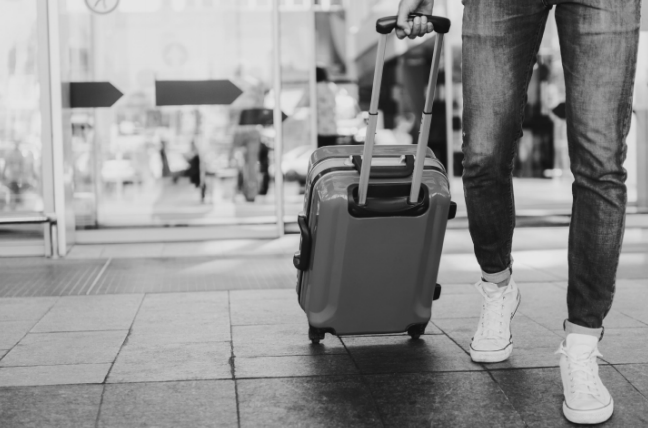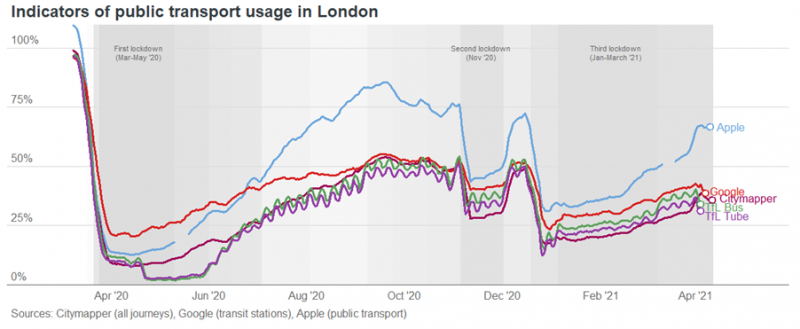The Covid-19 pandemic shocked the world. It sent unprecedented ripples of change within numerous sectors and organisations across the globe. With government restrictions, closure of borders and transportation limitations put in place to stop the spread of the virus came an evolution in lifestyles and how people operate in the world. Redundancies, furlough schemes and loss of life started to become a daily occurrence. Whether we like it or not, since 2020 the world has changed dramatically. This change is no more evident than in the travel and transport industry.
Now, more than ever, the travel and transport industry must create new strategies to move forward as the world continues to change. New government rules have restricted how we move from one place to another. Without the ability to adapt to these changes can result in the following:
- Falling victim to revenue shortfalls
- Losing competitive advantages
- Ineffective failed business models
- Economic downturns
- Growth in job redundancies
The pandemics impact on transport
The pandemic affected every mode of transport, from buses, trains to cars and planes. According to the International Energy Agency, global road transport activity was almost 50% below the 2019 average by the end of March 2020.
During the UK’s first national lockdown, London experienced a sudden plunge in transport usage in 2020. Data collected from the London Data Store demonstrates the decrease in consumer travel as shown in the below graph.
(London Data Store, 2021)
The UK wasn’t the only country to suffer. Many countries faced a decline in transport usage. For example, the USA railway system transports resource goods across the country in cargo containers every day. The rail system was hit hard in April 2020, with 25.2% fewer cargo containers being transported compared with the same month the year before. Trains and other commercial land transportation are an important link to supply communities and economies. The International Road Transport Union concluded that on a global scale, this change in movement resulted in the global economy falling into a recession in 2020, with real GDP forecast declined by 5.6% in 2020 versus 2019.
Flights put on hold:
When was your last holiday or trip outside the UK?
Travelling abroad has become more difficult since Covid-19. Limitations such as flight cancellations, border closures, government lockdowns and continuous Covid infection cases has resulted in uncertain travel planning.
In 2019, UK residents took 93 million trips abroad according to GOV.UK. With more than 50% of travellers using airlines to reach their destinations, global tourism has been put on hold to contain further infections. Forbes published that the tourism industry has lost £935 billion from the pandemic.
The aviation sector was hit with flight cancellations, employee redundancies and furlough schemes. Never before had this sector of transport experienced such a sudden decline in business. Overall in 2020 alone, airline financial losses accumulated to $370 billion as told by the International Airport Review.
The International Civil Aviation Organisation (ICAO) reported the impacts for flight cancellations per global region were:
- $120 billion loss in the Asia-Pacific region
- $100 billion loss in Europe
- $88 billion loss in North America
- $26 billion loss in Latin America / Caribbean
- $22 billion loss in the Middle East
- $14 billion in Africa
So what’s going to happen next? What does the future look like for airlines and bringing tourism back to its strength?
We’re already halfway through 2021, so it’s important to see what’s changed and what governments are doing to push forward.
Certain countries are starting to reopen their borders to welcome travellers, but under controlled regulations. The EU Digital COVID Certificate (EUDCC) has been created which aims to help safe and secure travel between European countries (27 countries included).
This certificate enables borders to see traveller’s vaccination status, test results or recovery statuses from past positive results. This method has enabled airlines to start operations under careful guidelines.
The UK has implemented the ‘Traffic Light List’ for when UK residents travel. The government has decided to list countries with a colour status according to their Covid risk (green, amber or red). Green being the lowest risk, and red being the highest risk to enter a country.
This system aims to enable travel to continue whilst containing infection cases from spreading back upon arrivals.
The future is very uncertain even with such systems and protocols in place. A report from the ICAO explained that the outlook is clouded by the challenge of controlling more infectious variants of the virus and a relatively slow rollout of vaccination worldwide.
Although 2021 might not see the economy bounce back rapidly, ICAO concluded that they forecast that airlines will hopefully break even within 2022.
What’s to come in an uncertain future?
As the worlds travel network starts to open up again, it’s important to understand how different the future may look like post-pandemic.
There is still much fear and uncertainty for passengers travelling. Planning a holiday or travelling outside the UK now holds risks and drawbacks which many people could be actively avoiding.
With the tourism sector still badly affected, no one truly knows how long it will take to recover. With many failed businesses and job losses since the pandemic, it could take a while for the once-booming sector to bounce back across the globe. One thing is for sure, travellers will have more confidence in locations if there are good governance and health systems put in place. Travellers will feel more trust and confidence within the tourism sector if the correct and safe approach is implemented.
The aviation industry has seen some of the biggest transformations in how people travel. With new health security measures put in place to ensure safety and protection such as social distancing, temperature checks and frequent sanitisation, this is an unavoidable process. But for how long will these strict procedures continue into the future? Although the new way of travelling could be something passengers experience long into the future, there have been predictions of a travel boom in domestic travel to hit. This highlights the importance of how organisations and governments need to be using digital transformation for updated and systematic approaches in passenger safety. Without doing so, the demand will be much greater than the supply of seats and operations within airports and other travel areas.
To find out how Adatis helped Heathrow Airport on their data journey during the pandemic, read our case study here.
To see how we can help you with your data, please get in touch or check out our other blogs here.



Introduction to Data Wrangler in Microsoft Fabric
What is Data Wrangler? A key selling point of Microsoft Fabric is the Data Science
Jul
Autogen Power BI Model in Tabular Editor
In the realm of business intelligence, Power BI has emerged as a powerful tool for
Jul
Microsoft Healthcare Accelerator for Fabric
Microsoft released the Healthcare Data Solutions in Microsoft Fabric in Q1 2024. It was introduced
Jul
Unlock the Power of Colour: Make Your Power BI Reports Pop
Colour is a powerful visual tool that can enhance the appeal and readability of your
Jul
Python vs. PySpark: Navigating Data Analytics in Databricks – Part 2
Part 2: Exploring Advanced Functionalities in Databricks Welcome back to our Databricks journey! In this
May
GPT-4 with Vision vs Custom Vision in Anomaly Detection
Businesses today are generating data at an unprecedented rate. Automated processing of data is essential
May
Exploring DALL·E Capabilities
What is DALL·E? DALL·E is text-to-image generation system developed by OpenAI using deep learning methodologies.
May
Using Copilot Studio to Develop a HR Policy Bot
The next addition to Microsoft’s generative AI and large language model tools is Microsoft Copilot
Apr